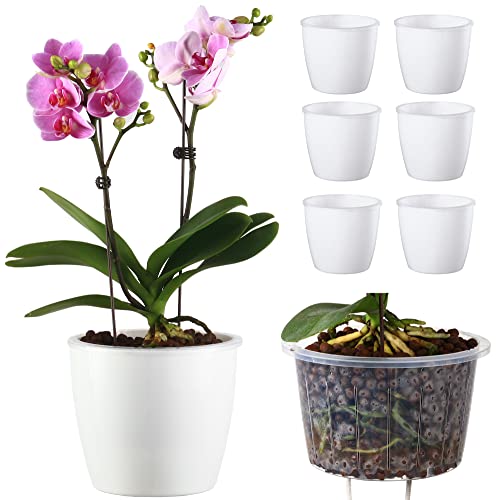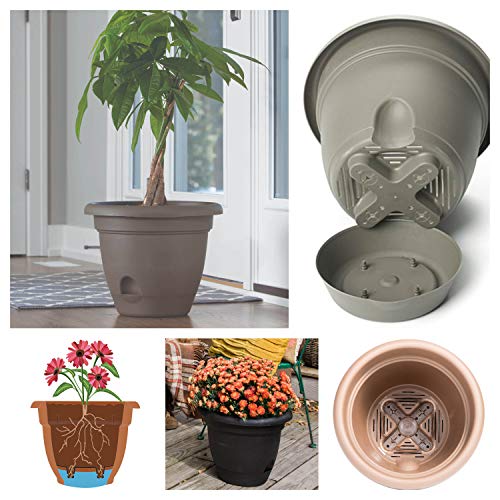This post contains affiliate links. If you buy something from one of our links we may earn a commission. Thanks

You’ve probably heard the term self-watering planter tossed around. But what does self-watering planter mean? We will go over the different kinds of self-watering planters and how they work.
Self-Watering Planter Key Takeaways:
- A self-watering planter is a gardening container equipped with a built-in system to automatically supply water to the plant roots from a reservoir.
- Through capillary action, either directly or via a wick, water is transported from the reservoir to the soil, ensuring a consistent moisture level.
- This setup helps prevent over or underwatering, promoting healthier plant growth while reducing watering chores for the gardener.
What Does Self-Watering Planter Mean?
A self-watering planter is a container for plants that has a built-in system to automatically supply water to the root system as needed.
These planters can be used indoors or outdoors and come in a variety of sizes, shapes, and colors to fit any planting need.
They are also called sub-irrigated planters or SIPs for short.
The self-watering system works by slowly releasing water from a reservoir into the soil as the plant roots absorb moisture.
This provides a consistent supply of water and helps to prevent over or underwatering, which can stress and damage plants.
They work by using capillary action which moves moisture from a reservoir to the soil.
Some use a wick to do this some do not and move water directly from the reservoir to the soil they contact. We will cover both types.
These planters are designed to water your plants automatically, so you don’t have to worry about them anymore.
It is important to point out they are not totally automatic because there must be water in the reservoir for them to work.
Keep reading to learn more about what self-watering planters are and how they work!
Do You Want To Grow Large Plants?

If you want to grow large plants like tomatoes or peppers I recommend and use GroBuckets. They won’t need to be refilled as often as smaller pots.
Your plants will have more room to grow a bigger root system. The old gardener saying “more roots mean more fruits” is really true.
These self-watering planters use 5-gallon buckets for containers. GroBuckets use a special insert that separates the water in the reservoir from the soil in the bucket.
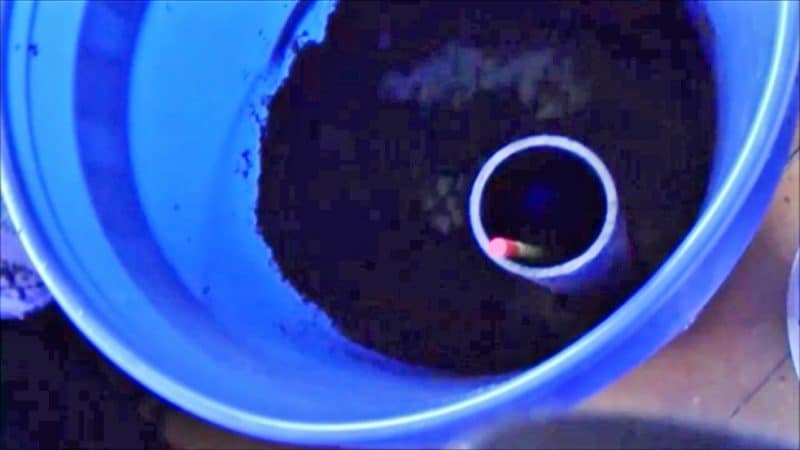
They come with a feed tube and you water them from the tube on top of the bucket. A hole is drilled near the bottom of the bucket to prevent overfilling them.
There is a float in the fill tube that will tell you when to add more water to the reservoir.
They don’t use wicks to keep the soil moist but rely on contact between the reservoir and the soil.
Many smaller self-watering pots rely on a wick to wet the soil. This is fine for smaller plants but may not deliver enough water for larger ones.
Here are some of my tomato and pepper plants in GroBuckets. They can be used indoors or outdoors.
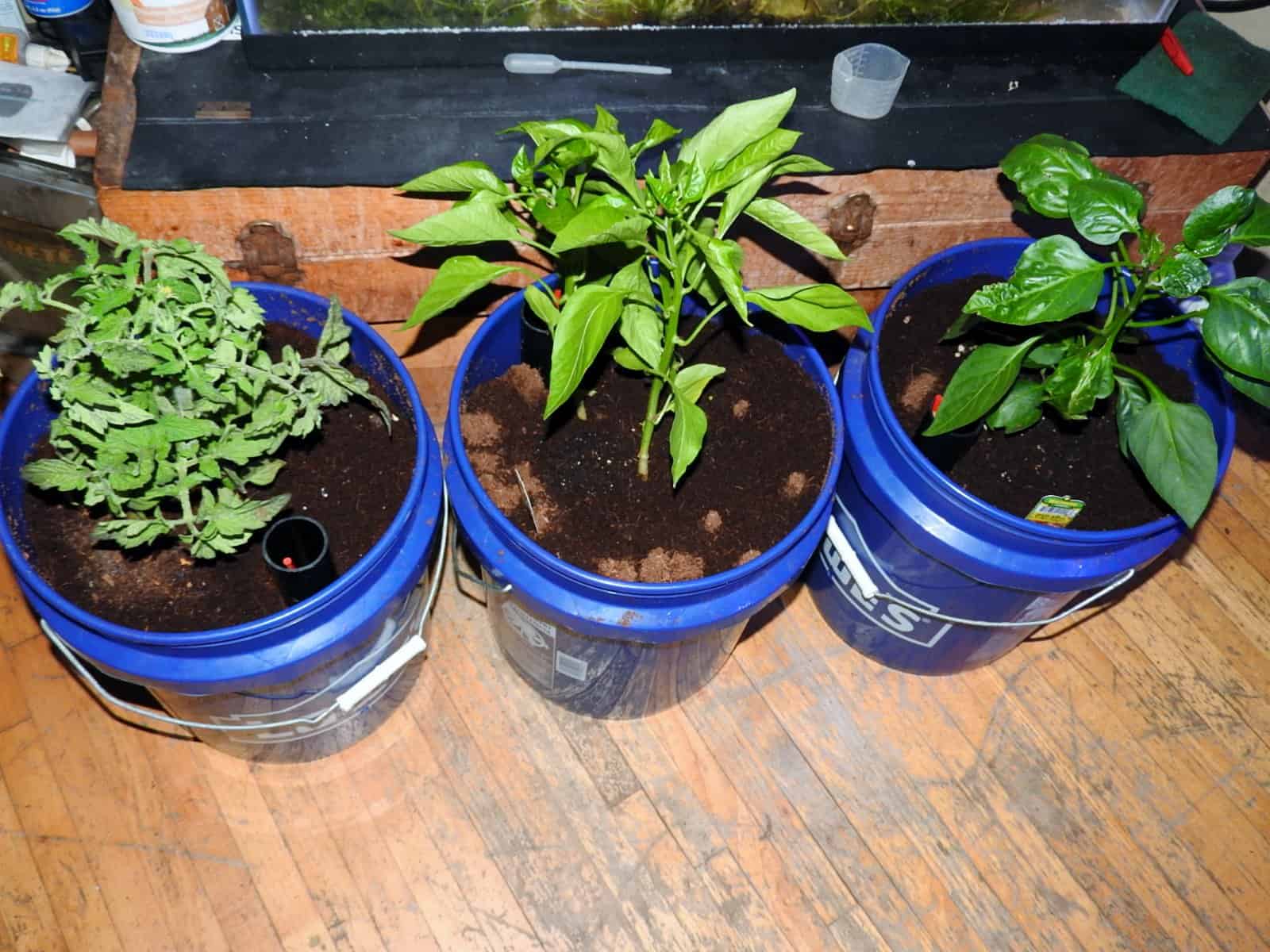
You can use a potting mix to fill your buckets but I recommend using coco coir in the bucket because it offers better wicking abilities than soil mixes.
Self Watering Pots
Self-watering pots work great for smaller plants. Many use a wick system but some rely on contact between the growing medium and the reservoir.
The thing about wicks is they are limited by how much water they move. They should be made of a rot-resistant material so you don’t need to replace them.
They work fine for smaller plants. The picture on top of this article shows some elephant garlic growing in self-watering planters. Below are some strawberries in self-watering pots.
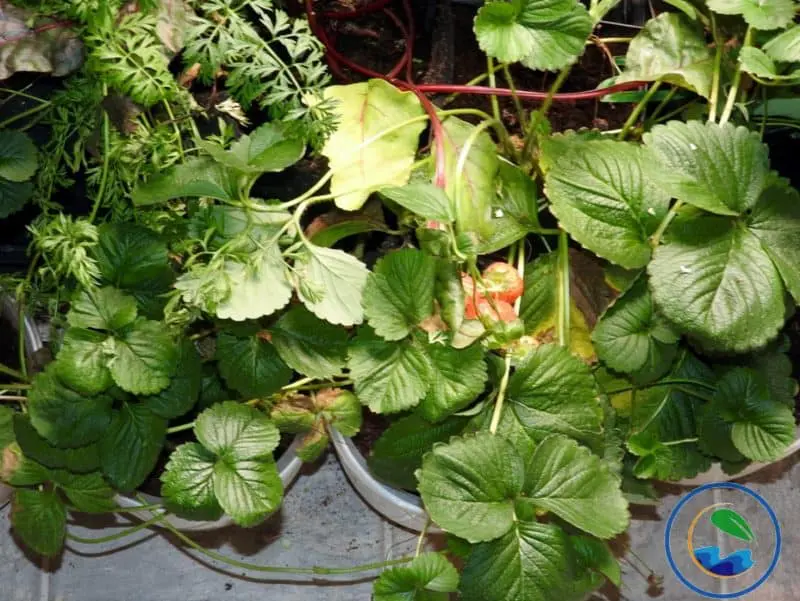
Here is a 12 inch self-watering planter that does not use wicks. It has a fill spout on the side which means you don’t need to lift the pot to refill the reservoir.
 Another Type Of SIP The EarthBox
Another Type Of SIP The EarthBox

The EarthBox works in a similar manner as the GroBuckets but it uses a tote instead of a bucket.
The EarthBox original container measures 29″ L x 11″ H x 13.5″ W/D. It can get pretty heavy but they do provide castors so you can move it.
You should be able to grow any vegetables you want in a container that size.
They also add fertilizer in a line across the top of the planter box. I am not sure it isn’t better to fertilize from the bottom.
The Most Important Thing To Know About Self-Watering Planters
No one tells you this. In order for wicking action to take place your potting mix must be wet. If you add dry mix and are waiting for it to be watered you will be disappointed. Capillary action will keep a moist mix watered but cant provide enough to water a dry mix.
Self-Watering Planter FAQs
Exploring self-watering planters can bring up questions, showing how these handy containers make gardening easier for both new and experienced gardeners.
Delving into some common inquiries unveils the practicality of self-watering planters in nurturing a verdant retreat amidst urban jungles or spacious backyards.
Q. How do self-watering planters work?
A. Self-watering planters operate on the principle of capillary action where water moves from a lower reservoir into the soil as it dries out, ensuring a steady supply of moisture to the plants.
Some designs use a wick, while others rely on direct soil to water contact to facilitate this moisture movement.
Q. Can self-watering planters be used for any plant?
A. While self-watering planters are versatile, they are more suited for vegetables, herbs, and flowers.
Plants that prefer drier conditions like succulents and cacti might not thrive in this setup due to the continuous moisture availability which could lead to root rot.
Q. What type of soil is ideal for self-watering planters?
A. A well-draining, moisture-retentive soil mix is ideal for self-watering planters.
Coco coir, peat-based mixes, or those amended with perlite are popular choices.
It’s advisable to avoid garden soil as it tends to compact over time, hindering water movement and root growth.
Q. How often should the water reservoir be refilled in self-watering planters?
A. The frequency of refilling the reservoir varies with the plant type, size of the planter, and environmental conditions.
Checking the water level every few days is a good practice to ensure there’s adequate water for the capillary action to continue, thereby keeping the soil sufficiently moist for the plants.
What Does Self-Watering Planter Mean? Final Thoughts
Also even though they are called self-watering planters this term is a bit misleading because you need to keep water the reservoir.
The amount of time your reservoir will last will depend on pot size, plant size, amount of sunlight and temperature.
The GroBuckets come with a float that shows the level in the reservoir and lets you know when to refill it. I like that feature a lot. Read more about grow buckets here: https://www.indoorvegetablegrower.com/grobucket-garden-kit/
The other thing that’s different is that you are bottom watering. You can top water the first time you set them up but once the soil is moist let the wick or reservoir do the watering.
If you want to grow plants with less watering and eliminate over or underwatering your plants then self-watering planters may be something to consider.

